
In the late 1990s Baron Philippe de Rothschild SA, true to the pioneering spirit of its founder, Baron Philippe, decided to start making wine in Chile.
What attracted Baroness Philippine de Rothschild, Baron Philippe’s daughter, was the potential of the Chilean terroir and the possibility of making high-quality wines that met her exacting requirements.
With soils suitable for vine growing and a varied topography and climate, conditions in Chile are ideal for revealing the finest expression of Cabernet Sauvignon in particular.
At Buin-Maipo, 45 kilometres south of Santiago, Viña Baron Philippe de Rothschild Chile stands proud in the middle of its own 60-hectare vineyard.
Escudo Rojo, the Rothschild family’s eponymous first Chilean wine, comes from the Maipo Valley, the historic birthplace of great Chilean wines.
Escudo Rojo owes its refinement to French grape varieties and its power to the Chilean soil.
In their quest for perfection, our winemakers select the best wines from Chile’s magnificent terroirs, then blend them with precision to create this complex, exceptional wine.
Escudo Rojo - Chile

In the late 1990s Baron Philippe de Rothschild SA, true to the pioneering spirit of its founder, Baron Philippe, decided to start making wine in Chile.
What attracted Baroness Philippine de Rothschild, Baron Philippe’s daughter, was the potential of the Chilean terroir and the possibility of making high-quality wines that met her exacting requirements.
With soils suitable for vine growing and a varied topography and climate, conditions in Chile are ideal for revealing the finest expression of Cabernet Sauvignon in particular.
At Buin-Maipo, 45 kilometres south of Santiago, Viña Baron Philippe de Rothschild Chile stands proud in the middle of its own 60-hectare vineyard.
Escudo Rojo, the Rothschild family’s eponymous first Chilean wine, comes from the Maipo Valley, the historic birthplace of great Chilean wines.
Escudo Rojo owes its refinement to French grape varieties and its power to the Chilean soil.
In their quest for perfection, our winemakers select the best wines from Chile’s magnificent terroirs, then blend them with precision to create this complex, exceptional wine.



MAPU - Chile
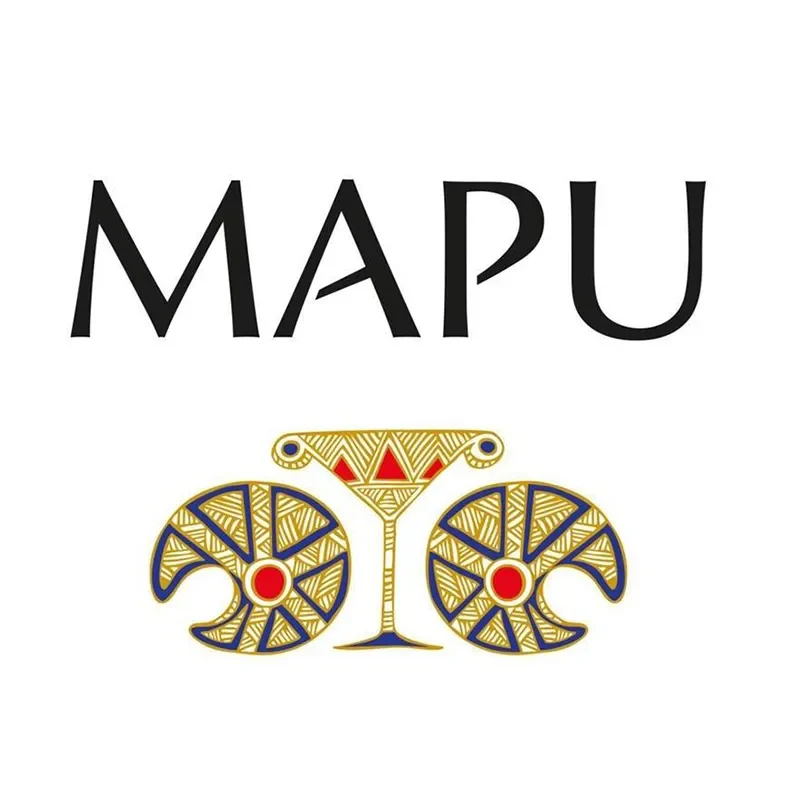
Chile’s Mapu Valley is home to an ancient terroir. It is here that some of the first South American wines were made, as spirited as they were generous. Fascinated by the terroir’s unique character and potential, Baron Philippe de Rothschild’s winemakers wanted to get back to the origins of a legendary vineyard and its grape varieties: Mapu wines were born.
The expertise of Baron Philippe de Rothschild’s people enables them to extract the raw and original expression of these unique terroirs.
Each wine speaks the language of this legendary land, embodied in respect for the terroir, generous fruit, exuberant aromas and flavours, and rich textures.
“MAPU IS A CELEBRATION OF FRIENDSHIP AND AUTHENTICITY, A SUCCULENT WINE FULL OF SURPRISES THAT ASKS TO BE SHARED, AN INVITATION TO CELEBRATE CHILE.”
The Mapu range is made up of red and white varietal wines – Cabernet Sauvignon, Merlot, Carmenere and Sauvignon Blanc – as well as highly elegant blends of Bordeaux and Chilean grape varieties – Cabernet Sauvignon Carmenere, Sauvignon Blanc Chardonnay – born of Baron Philippe de Rothschild’s expertise, knowledge of the terroirs and command of the art of blending.
Bursting with succulent fruit and spice aromas and flavours, Mapu wines are an invitation to generosity and sharing around simple, flavourful food. Whether for an impromptu aperitif with friends or a hearty dinner, Mapu is a perfect match.
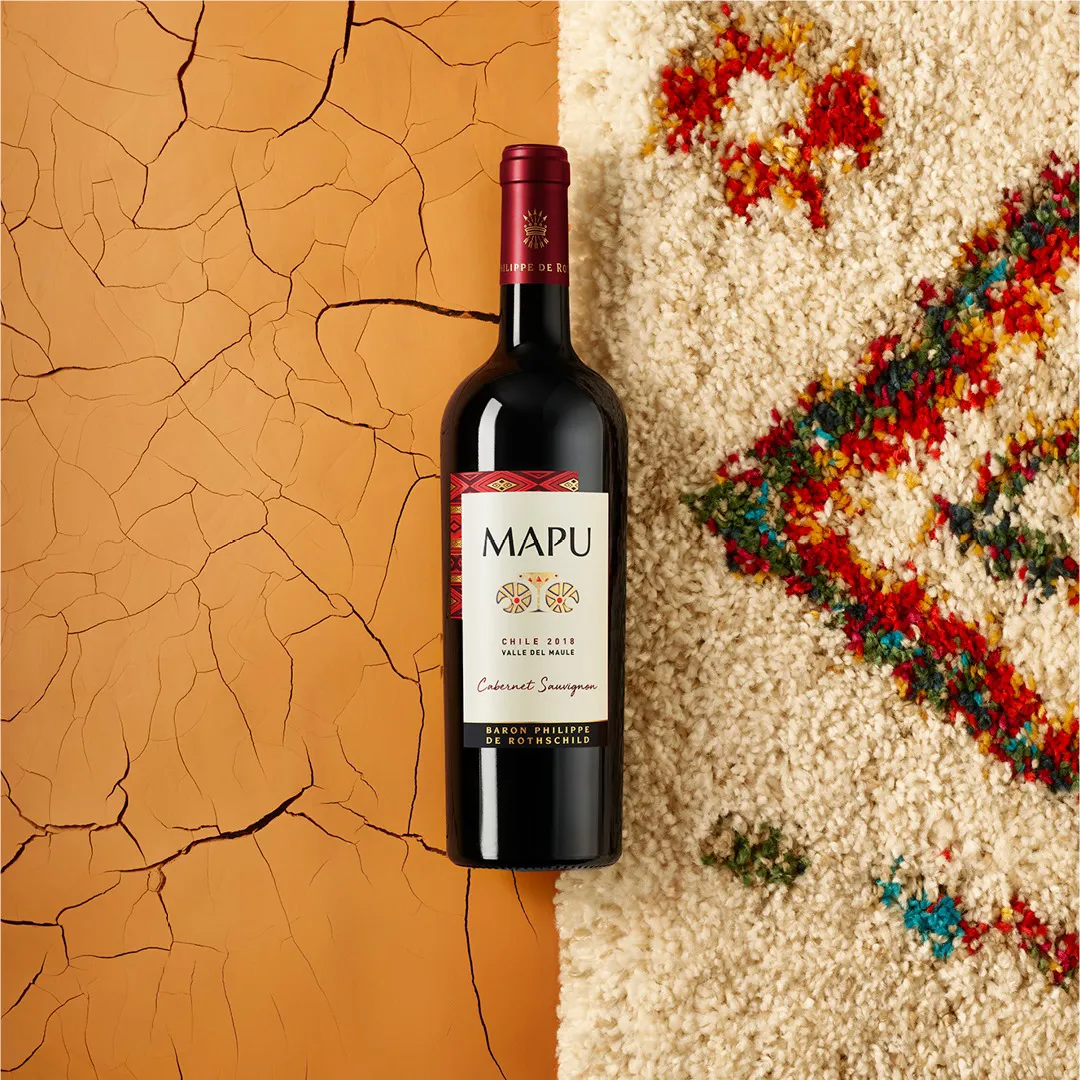

Chile’s Mapu Valley is home to an ancient terroir. It is here that some of the first South American wines were made, as spirited as they were generous. Fascinated by the terroir’s unique character and potential, Baron Philippe de Rothschild’s winemakers wanted to get back to the origins of a legendary vineyard and its grape varieties: Mapu wines were born.
The expertise of Baron Philippe de Rothschild’s people enables them to extract the raw and original expression of these unique terroirs.
Each wine speaks the language of this legendary land, embodied in respect for the terroir, generous fruit, exuberant aromas and flavours, and rich textures.
“MAPU IS A CELEBRATION OF FRIENDSHIP AND AUTHENTICITY, A SUCCULENT WINE FULL OF SURPRISES THAT ASKS TO BE SHARED, AN INVITATION TO CELEBRATE CHILE.”
The Mapu range is made up of red and white varietal wines – Cabernet Sauvignon, Merlot, Carmenere and Sauvignon Blanc – as well as highly elegant blends of Bordeaux and Chilean grape varieties – Cabernet Sauvignon Carmenere, Sauvignon Blanc Chardonnay – born of Baron Philippe de Rothschild’s expertise, knowledge of the terroirs and command of the art of blending.
Bursting with succulent fruit and spice aromas and flavours, Mapu wines are an invitation to generosity and sharing around simple, flavourful food. Whether for an impromptu aperitif with friends or a hearty dinner, Mapu is a perfect match.
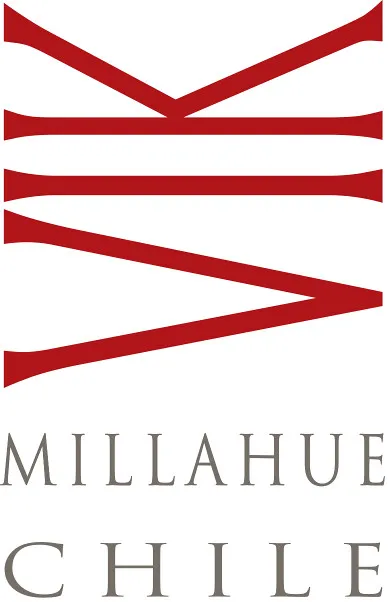
The visionaries behind Vik, Alexander and Carrie Vik, embarked on a journey to make a wine which is worthy of joining the pantheon of the world’s best wines. They gathered a team of oenologists, climatologists, geologists, viticulturalists and agronomists to find South America’s best terroir.
Alexander Vik identified and selected the best terroir with optimal climatic conditions for grape growing, purchasing 11,000 acres in Chile’s Millahue Valley, meaning the “Place of Gold” in Chile’s native language. The vineyard was planted in the valley’s interior, offering a variety of unequalled terroir and small microclimates. Each offers distinct exposures cooled by coastal breezes, providing the desired complexity required to produce South America best wine.
VIK ranks among the top 3 of the 50 World’s Best Vineyards in 2023. VIK has climbed from 10th position in the 2020 rankings & 7th position in 2021 among the world’s best vineyards to 4th place in the 2022 standing of the prestigious competition. VIK competed against renowned wineries from Europe and Latin America in this list, where each prestigious winery was scored on its winery, fine dining, and overall experience among other things.
The soul of the VIK project lies in our holistic wines, our four reds — VIK, Milla Cala, “A” and La Piu
Belle red blend— and La Piu Belle Rosé.
VIK blends are elegant, voluptuous, complex and well balanced. They currently have 3 signature blends, aged in French oak barrels and our own Barroir for more than 20 months. The composition of their wines varies from crush to crush, always with the goal of reflecting the freshness, fruit, balance, aromas, structure, precision and energy present in our terroir
Vina VIK - Chile

The visionaries behind Vik, Alexander and Carrie Vik, embarked on a journey to make a wine which is worthy of joining the pantheon of the world’s best wines. They gathered a team of oenologists, climatologists, geologists, viticulturalists and agronomists to find South America’s best terroir.
Alexander Vik identified and selected the best terroir with optimal climatic conditions for grape growing, purchasing 11,000 acres in Chile’s Millahue Valley, meaning the “Place of Gold” in Chile’s native language. The vineyard was planted in the valley’s interior, offering a variety of unequalled terroir and small microclimates. Each offers distinct exposures cooled by coastal breezes, providing the desired complexity required to produce South America best wine.
VIK ranks among the top 3 of the 50 World’s Best Vineyards in 2023. VIK has climbed from 10th position in the 2020 rankings & 7th position in 2021 among the world’s best vineyards to 4th place in the 2022 standing of the prestigious competition. VIK competed against renowned wineries from Europe and Latin America in this list, where each prestigious winery was scored on its winery, fine dining, and overall experience among other things.
The soul of the VIK project lies in our holistic wines, our four reds — VIK, Milla Cala, “A” and La Piu
Belle red blend— and La Piu Belle Rosé.
VIK blends are elegant, voluptuous, complex and well balanced. They currently have 3 signature blends, aged in French oak barrels and our own Barroir for more than 20 months. The composition of their wines varies from crush to crush, always with the goal of reflecting the freshness, fruit, balance, aromas, structure, precision and energy present in our terroir
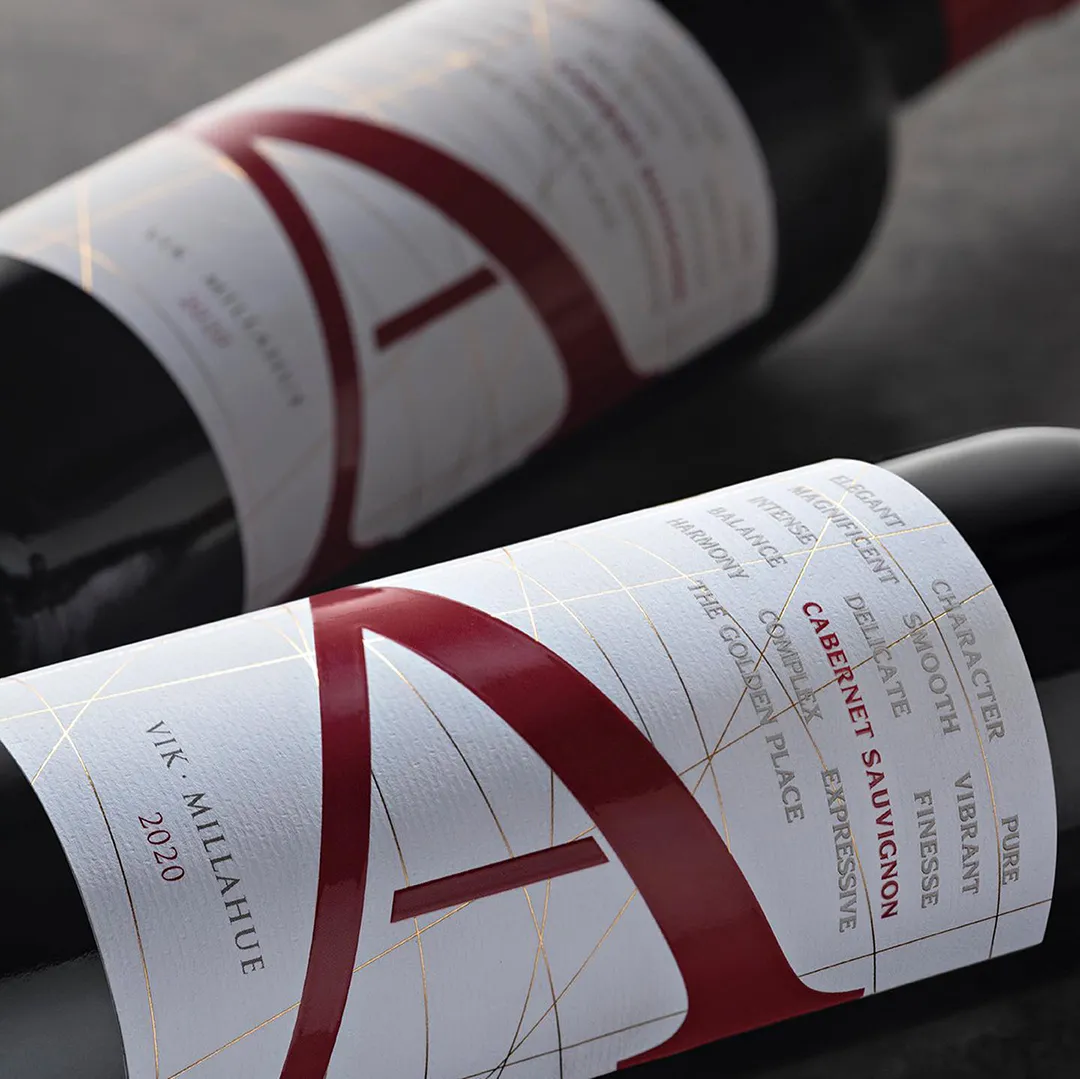


Viña Los Boldos - Chile

Viña Los Boldos is a family-owned winery of European origin, founded in 1991. Located on the exceptional soils of the Cachapoal Andes Valley in Chile. Our wines are crafted from our vineyards, where we strive for excellence every day, blending the vigor and grandeur of the Andes with the elegance and dedication of our European legacy.
The Château concept represents us for being a premium winery, where our wines are born, carefully crafted and bottled in their place of origin.
Viña Los Boldos is part of the Sogrape Group, founded in 1942 by Fernando Van Zeller Guedes. The quality of its products, the modernization and its continuous expansion, led the Lusitanian winery to be chosen in 2015 and 2016 as the best wine company in the world. Viña Los Boldos became part of the group in 2008.
Located in the prestigious Cachapoal Andes valley, where the Andes Mountain range defines the valley’s climate and topographic conditions, where the Cachapoal river acts as a temperature moderator and the main source of irrigation. Viña Los Boldos benefits from a Mediterranean climate, with cold and rainy winters and summers that are warm and dry.
A huge thermic oscillation between day and night causes the fruit to evolve correctly through a slow and balanced ripening process. It has 150 planted hectares with different varieties such as Cabernet Sauvignon, Carménère, Syrah, Chardonnay, Merlot, Sauvignon Blanc, Friulano and recently with Touriga Nacional, Petit Verdot and Cabernet Franc.
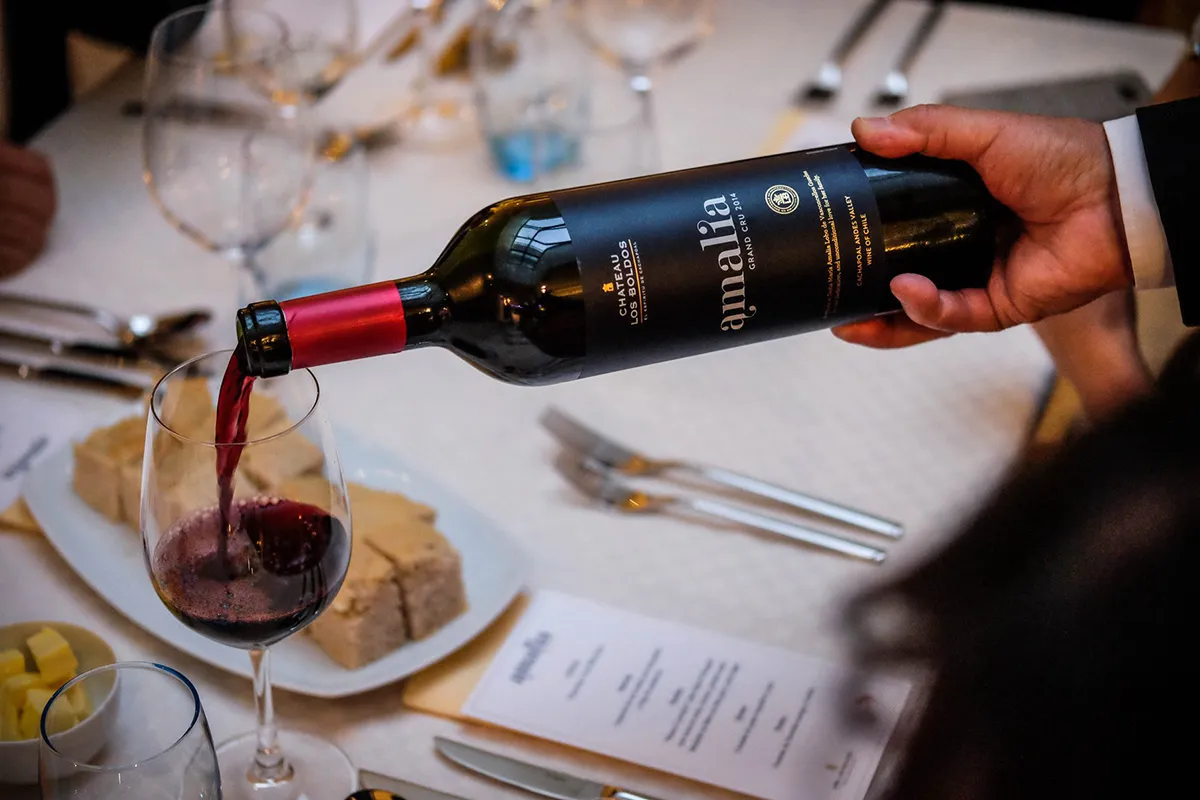

Viña Los Boldos is a family-owned winery of European origin, founded in 1991. Located on the exceptional soils of the Cachapoal Andes Valley in Chile. Our wines are crafted from our vineyards, where we strive for excellence every day, blending the vigor and grandeur of the Andes with the elegance and dedication of our European legacy.
The Château concept represents us for being a premium winery, where our wines are born, carefully crafted and bottled in their place of origin.
Viña Los Boldos is part of the Sogrape Group, founded in 1942 by Fernando Van Zeller Guedes. The quality of its products, the modernization and its continuous expansion, led the Lusitanian winery to be chosen in 2015 and 2016 as the best wine company in the world. Viña Los Boldos became part of the group in 2008.
Located in the prestigious Cachapoal Andes valley, where the Andes Mountain range defines the valley’s climate and topographic conditions, where the Cachapoal river acts as a temperature moderator and the main source of irrigation. Viña Los Boldos benefits from a Mediterranean climate, with cold and rainy winters and summers that are warm and dry.
A huge thermic oscillation between day and night causes the fruit to evolve correctly through a slow and balanced ripening process. It has 150 planted hectares with different varieties such as Cabernet Sauvignon, Carménère, Syrah, Chardonnay, Merlot, Sauvignon Blanc, Friulano and recently with Touriga Nacional, Petit Verdot and Cabernet Franc.
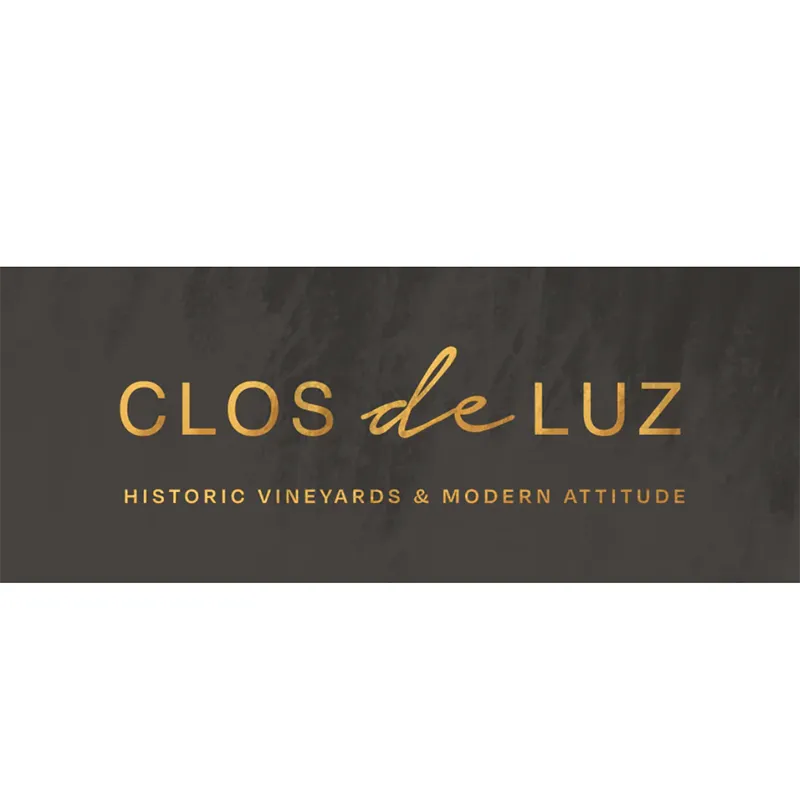
The vineyards were planted in 1945 by the grandmother of the family, Luz. Clos de Luz is naturally walled in by the Mancuman hill (hence ‘Clos’ is used – a French term for a walled vineyard). The 33 hectares of vineyards on the estate offer a potential production of 250,000 bottles.
The Almahue Valley is known as the birthplace of Chilean Carménère and belongs to D.O. Rapel Valley.
Clos de Luz prides itself on a style of winemaking based on a natural approach with the principal focus of quality. They create fresh wines with a subtle use of oak.
The terroir consists of granitic soil with quartz components of volcanic origin. The original vines were planted with the aim of preserving the native forest surrounding the vineyard. The vineyards benefit from early morning sun and cooler afternoons with a Pacific Ocean breeze.
The first vines were planted in 1945, being among the oldest in Chile – All of the vines are ungrafted and non-clonal. The grapes are sustainably grown and the soil is ploughed by horses. Massal is an old and rigorous method of selecting the best vines in a vineyard and propagating them through cuttings. It is the opposite of clonal propagation. The aim is to conserve the natural diversity of the plants, thus creating more complex and unique wines.
Clos de Luz aims to produce elegant wines with a gentle use of neutral French oak to enhance the natural fruity character of the wines. Their style of winemaking is non-interventional.
• Indigenous yeast
• Low level of sulfites
• No acidification and no chemical additives
Clos de Luz- Chile

The vineyards were planted in 1945 by the grandmother of the family, Luz. Clos de Luz is naturally walled in by the Mancuman hill (hence ‘Clos’ is used – a French term for a walled vineyard). The 33 hectares of vineyards on the estate offer a potential production of 250,000 bottles.
The Almahue Valley is known as the birthplace of Chilean Carménère and belongs to D.O. Rapel Valley.
Clos de Luz prides itself on a style of winemaking based on a natural approach with the principal focus of quality. They create fresh wines with a subtle use of oak.
The terroir consists of granitic soil with quartz components of volcanic origin. The original vines were planted with the aim of preserving the native forest surrounding the vineyard. The vineyards benefit from early morning sun and cooler afternoons with a Pacific Ocean breeze.
The first vines were planted in 1945, being among the oldest in Chile – All of the vines are ungrafted and non-clonal. The grapes are sustainably grown and the soil is ploughed by horses. Massal is an old and rigorous method of selecting the best vines in a vineyard and propagating them through cuttings. It is the opposite of clonal propagation. The aim is to conserve the natural diversity of the plants, thus creating more complex and unique wines.
Clos de Luz aims to produce elegant wines with a gentle use of neutral French oak to enhance the natural fruity character of the wines. Their style of winemaking is non-interventional.
• Indigenous yeast
• Low level of sulfites
• No acidification and no chemical additives
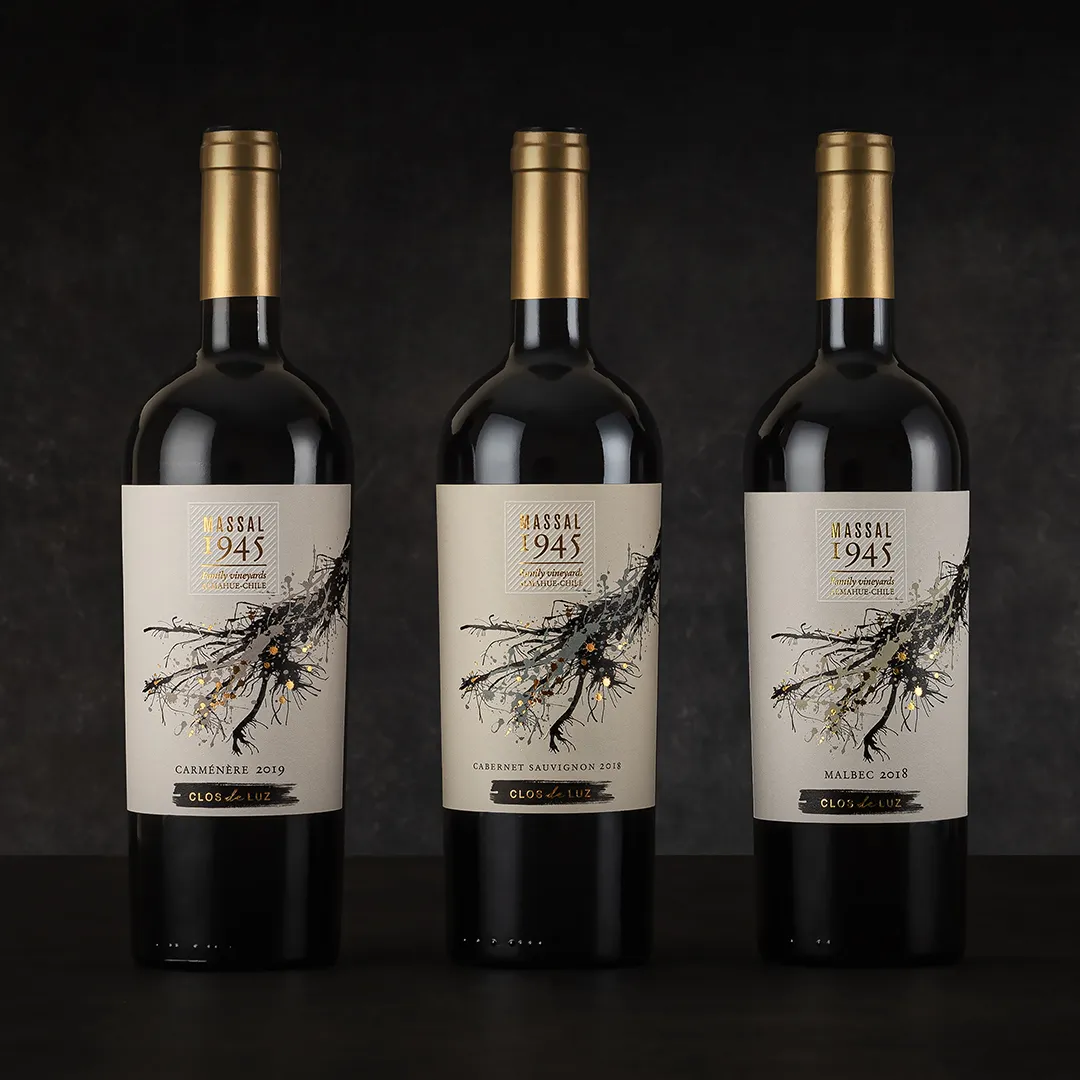


Callejon del Crimen (Crime Alley) – Argentina
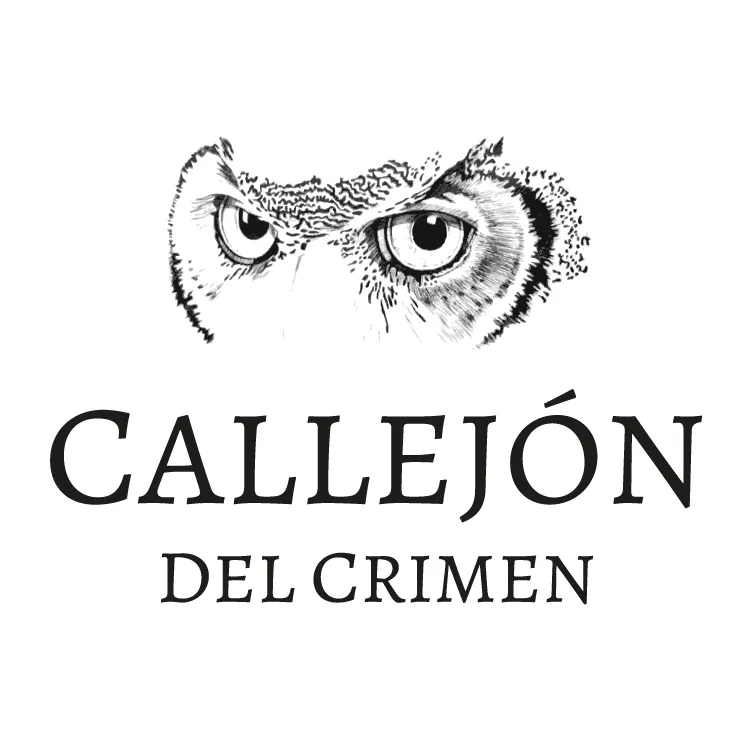
Our winery is located in Mendoza at the foot of the Tupungato volcano, one of the most important hills in the Andes mountains.
We were one of the first wineries built in this region, owning some of the oldest vineyards in Uco Valley.
Callejon del Crimen boasts 106 hectares of vineyards situated in prime micro-terroirs such as Gualtallary Tupungato, Vista Flores Tunuyan, Paraje Altamira San Carlos, and Pampa El Cepillo San Carlos, producing varieties like Malbec, Cabernet Franc, Petit Verdot, Cabernet Sauvignon, Sangiovese, Chardonnay and Semillon.
They have a variety of great terroirs in Uco Valley. This allows us to micro-vinify each plot separately to reflect these details, valuing the diversity of soils in this valley.
Concrete and stainless-steel tanks, French oak barrels (barri-ques from 160 to 500 litres; Slovenian oak casks of 6,500 litres)
“We are the white owls, the spectators of the immensity of the Uco Valley. We are the ones who guard the stories that preceded our wines.”
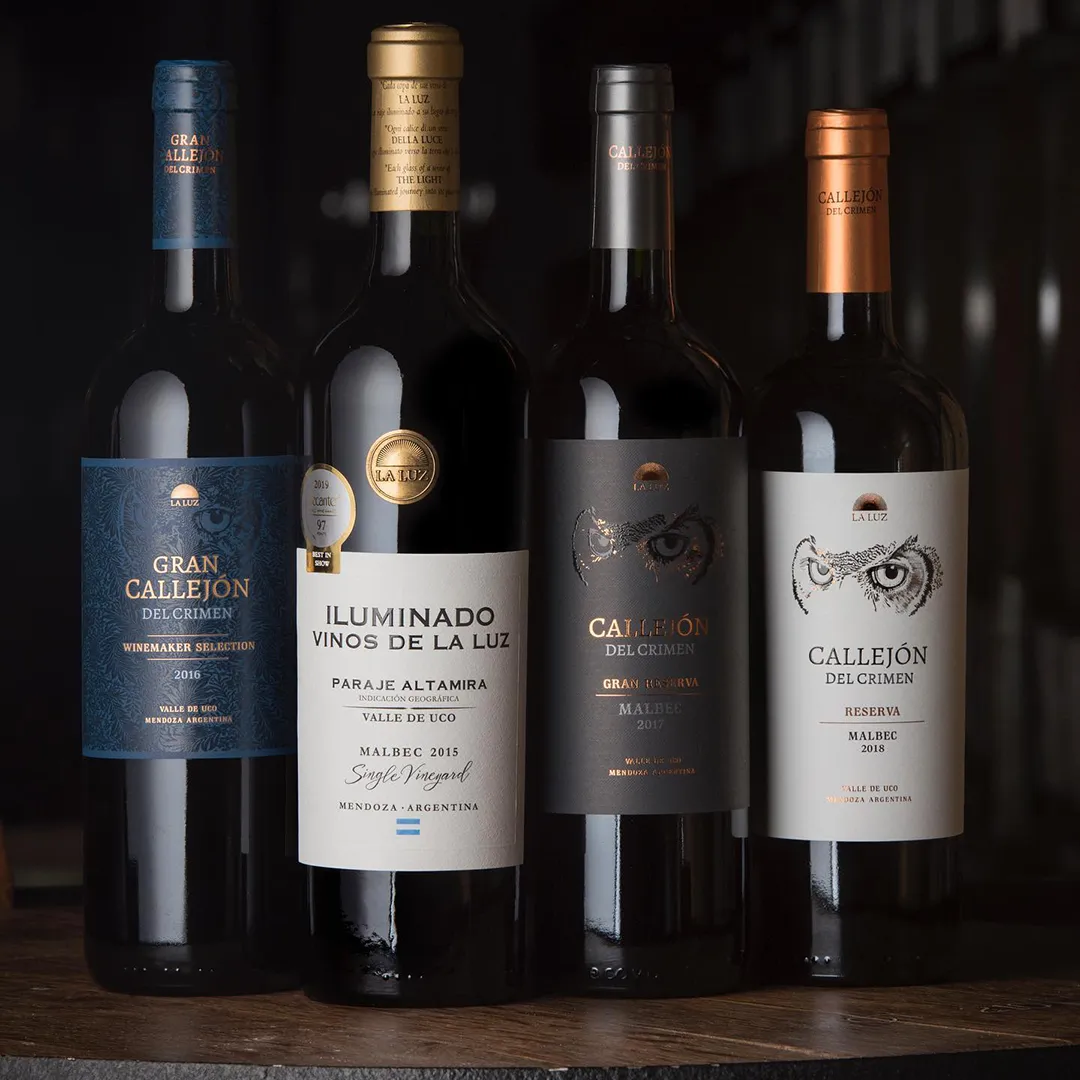

Our winery is located in Mendoza at the foot of the Tupungato volcano, one of the most important hills in the Andes mountains.
We were one of the first wineries built in this region, owning some of the oldest vineyards in Uco Valley.
Callejon del Crimen boasts 106 hectares of vineyards situated in prime micro-terroirs such as Gualtallary Tupungato, Vista Flores Tunuyan, Paraje Altamira San Carlos, and Pampa El Cepillo San Carlos, producing varieties like Malbec, Cabernet Franc, Petit Verdot, Cabernet Sauvignon, Sangiovese, Chardonnay and Semillon.
They have a variety of great terroirs in Uco Valley. This allows us to micro-vinify each plot separately to reflect these details, valuing the diversity of soils in this valley.
Concrete and stainless-steel tanks, French oak barrels (barri-ques from 160 to 500 litres; Slovenian oak casks of 6,500 litres)
“We are the white owls, the spectators of the immensity of the Uco Valley. We are the ones who guard the stories that preceded our wines.”

On the elevated plains of Spain lies Castillay León province. It has two sister wine regions with different personalities: To the east, Ribera del Duero (appellation of origin since 1982) is the land for intense red wines made from Tempranillo; and to the west, Rueda (appellation of origin since 1980) gives birth to lively whites from Verdejo grape.
Ribera del Duero is one of the highest wine producing regions in Europe. It has a large extension of limestone cliffs with a mix of soils, exposures, and elevations, embracing Spain´s signature grape: Tempranillo. While the average height in this region is 750 meters above sea level, our vineyards are located at 900 meters leading to slower grape ripening, bringing wines with natural freshness, great expression and complexity.
Appellation of origin Rueda is the region for white wines, especially the indigenous grape Verdejo. Plentiful sunshine, limited rainfall, and high diurnal range, allows us to produce refreshing, aromatic and balanced white wines. Our vineyards are located at 640 meters above sea level in La Seca area, where well-drained stony soils provide fruity flavours and minerality to our wines.
This extreme climate, along with diverse soils, contributes to the unique personality of Pagos de Valcerracín.
Pagos De Valcerracin – Spain

On the elevated plains of Spain lies Castillay León province. It has two sister wine regions with different personalities: To the east, Ribera del Duero (appellation of origin since 1982) is the land for intense red wines made from Tempranillo; and to the west, Rueda (appellation of origin since 1980) gives birth to lively whites from Verdejo grape.
Ribera del Duero is one of the highest wine producing regions in Europe. It has a large extension of limestone cliffs with a mix of soils, exposures, and elevations, embracing Spain´s signature grape: Tempranillo. While the average height in this region is 750 meters above sea level, our vineyards are located at 900 meters leading to slower grape ripening, bringing wines with natural freshness, great expression and complexity.
Appellation of origin Rueda is the region for white wines, especially the indigenous grape Verdejo. Plentiful sunshine, limited rainfall, and high diurnal range, allows us to produce refreshing, aromatic and balanced white wines. Our vineyards are located at 640 meters above sea level in La Seca area, where well-drained stony soils provide fruity flavours and minerality to our wines.
This extreme climate, along with diverse soils, contributes to the unique personality of Pagos de Valcerracín.
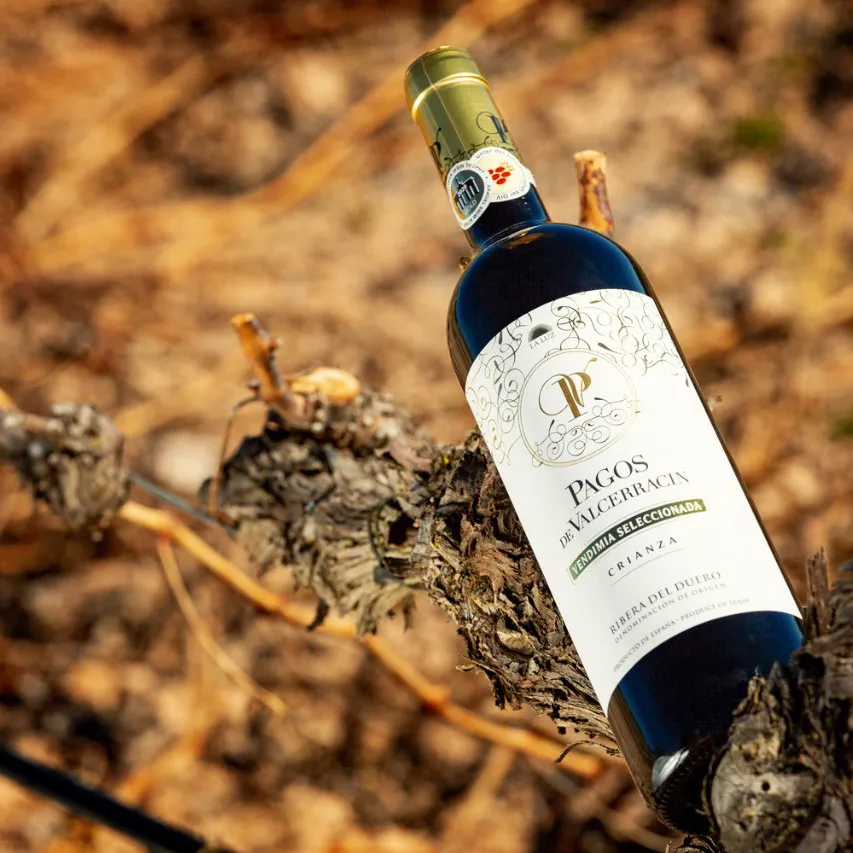


Iluminado – Argentina, Italy, Spain, USA
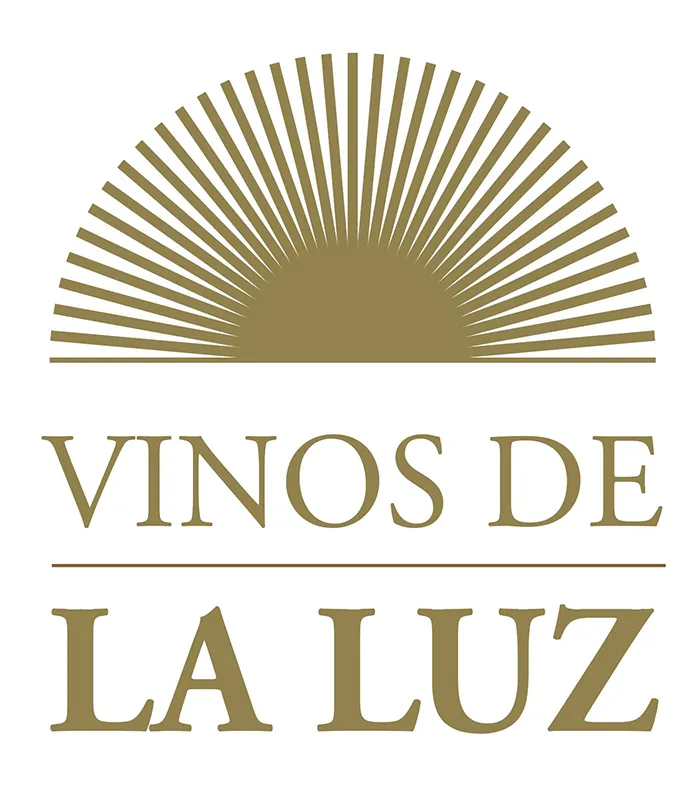
The common philosophy of all Vinos de La Luz wines are that they are linked to altitude and the vineyards that produce them are closer to the sunlight. The total production of Iluminado Vinos de La Luz in each country is 3,500 numbered bottles, and each wine is a single varietal obtained from the grapes of our historic vineyards located in the most outstanding wine regions: Ribera del Duero, Peñafiel – Spain; Uco Valley, Mendoza – Argentina; Tuscany, Siena – Italy; and Santa Maria Valley – USA.
Iluminado Vinos de La Luz has been dreamed and created to be so long-lived that it will always outlive its creators.


The common philosophy of all Vinos de La Luz wines are that they are linked to altitude and the vineyards that produce them are closer to the sunlight. The total production of Iluminado Vinos de La Luz in each country is 3,500 numbered bottles, and each wine is a single varietal obtained from the grapes of our historic vineyards located in the most outstanding wine regions: Ribera del Duero, Peñafiel – Spain; Uco Valley, Mendoza – Argentina; Tuscany, Siena – Italy; and Santa Maria Valley – USA.
Iluminado Vinos de La Luz has been dreamed and created to be so long-lived that it will always outlive its creators.

The story of Bodegas LAN is intimately linked to the land that saw our inception in 1972.
A name – LAN – composed of the initials of the three provinces that make up the D. O. Ca. Rioja: Logroño (now La Rioja), Álava and Navarra.
A FUTURE WRITTEN WITH FOUR Rs – Rioja, Rías Baixas, Ribera and Rueda. Or in other words: Bodegas LAN, Santiago Ruiz, Marqués de Burgos, Aura and Duquesa de Valladolid. Although Riojan in origin, our future is linked to four appellations that all go back a long way and represent our understanding of viticulture.
Pioneers in putting our trust in the land, in LAN we believe that winemaking starts with viticulture. A principle – that we will stand by forever – and that our winemakers María Barúa and Luisa Freire transfer to the vineyards selected in the other historic designations of origin in which LAN is present.
Bodegas LAN – Spain

The story of Bodegas LAN is intimately linked to the land that saw our inception in 1972.
A name – LAN – composed of the initials of the three provinces that make up the D. O. Ca. Rioja: Logroño (now La Rioja), Álava and Navarra.
A FUTURE WRITTEN WITH FOUR Rs – Rioja, Rías Baixas, Ribera and Rueda. Or in other words: Bodegas LAN, Santiago Ruiz, Marqués de Burgos, Aura and Duquesa de Valladolid. Although Riojan in origin, our future is linked to four appellations that all go back a long way and represent our understanding of viticulture.
Pioneers in putting our trust in the land, in LAN we believe that winemaking starts with viticulture. A principle – that we will stand by forever – and that our winemakers María Barúa and Luisa Freire transfer to the vineyards selected in the other historic designations of origin in which LAN is present.
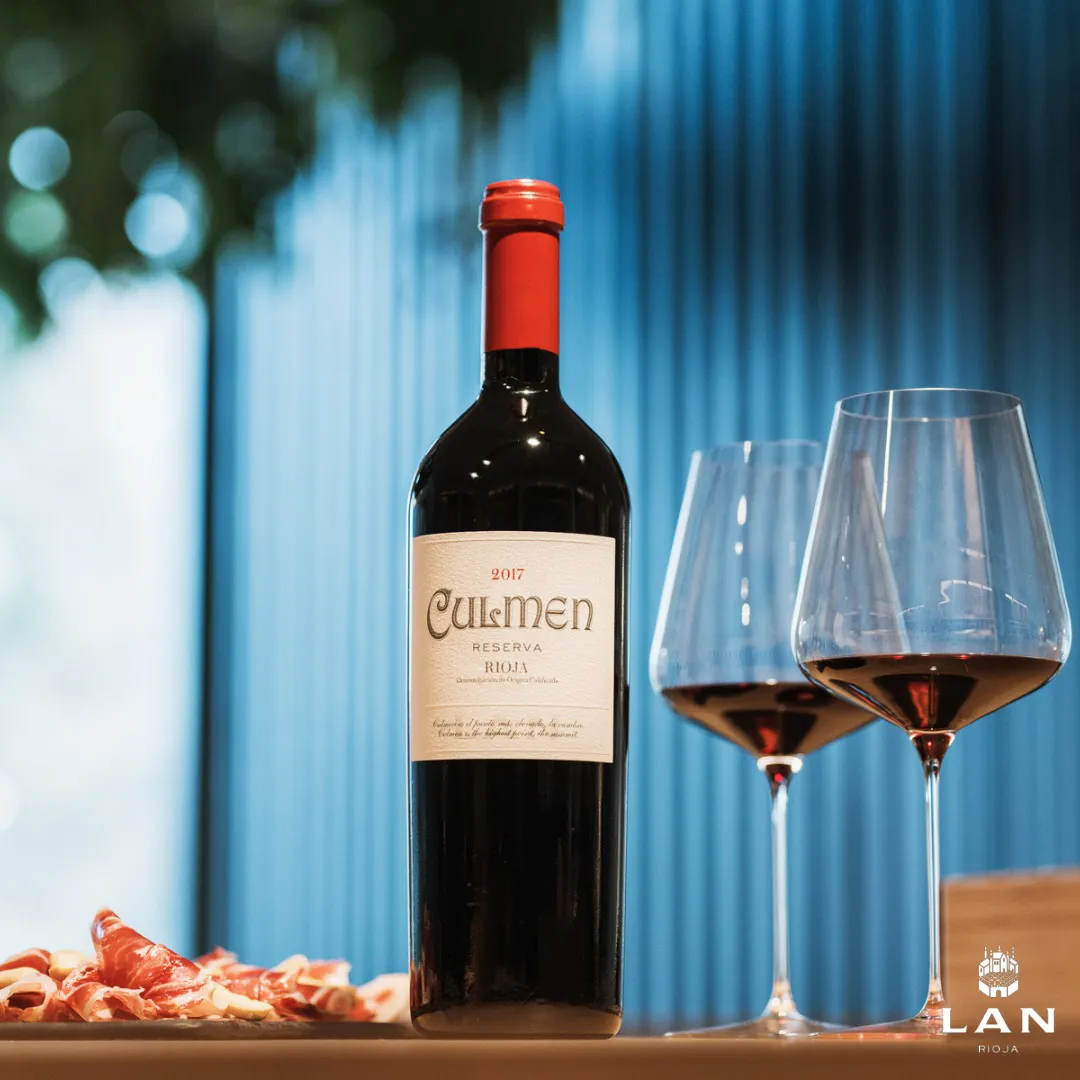


Marques de Burgos – Spain
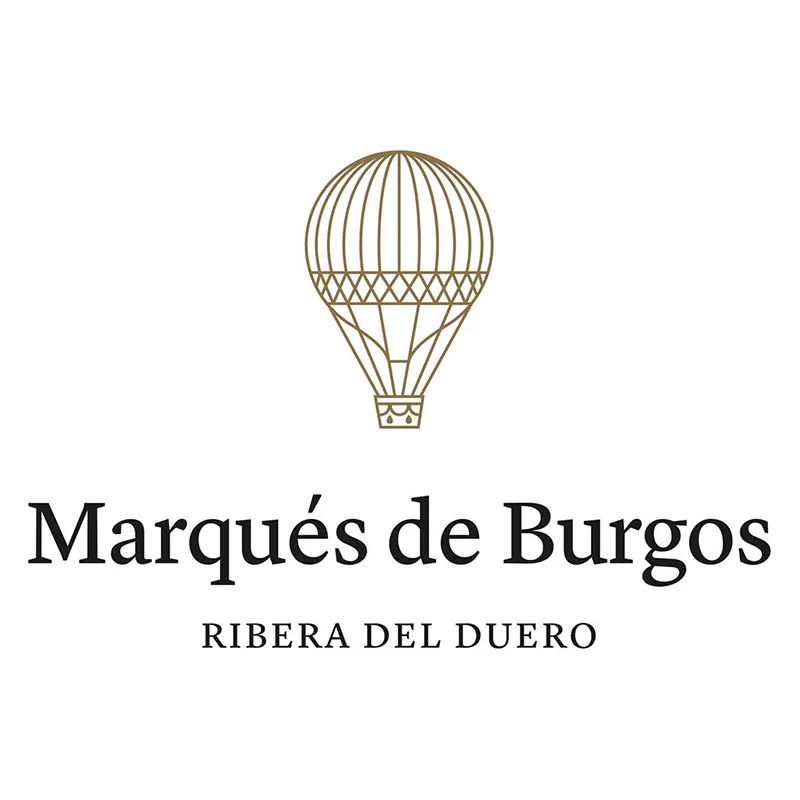
LAN’S new challenge: In the hands of our specialist in red winemaking, María Barúa, Bodegas LAN’s challenge in the Ribera del Duero is born: a story of selection and craft winemaking that began in 2011. LAN’s philosophy – that the origin of wine is in the vineyard – has also been transferred to this project.
OLD VINES IN THE HEART OF THE RIBERA: At an altitude of 850 metres above sea level, the towns of Quintana del Pidio, Horra, Roa and La Aguilera are home to the oldest and lowest-yielding vineyards in the whole of the D.O. Ribera del Duero, on south facing slopes and infertile, stony soils. This is where the parcels that go into the Marqués de Burgos wines are selected each year. LAN’s adventure in the Ribera del Duero originates in unique vineyards that have retained the original personality of this historic wine region over many years.


LAN’S new challenge: In the hands of our specialist in red winemaking, María Barúa, Bodegas LAN’s challenge in the Ribera del Duero is born: a story of selection and craft winemaking that began in 2011. LAN’s philosophy – that the origin of wine is in the vineyard – has also been transferred to this project.
OLD VINES IN THE HEART OF THE RIBERA: At an altitude of 850 metres above sea level, the towns of Quintana del Pidio, Horra, Roa and La Aguilera are home to the oldest and lowest-yielding vineyards in the whole of the D.O. Ribera del Duero, on south facing slopes and infertile, stony soils. This is where the parcels that go into the Marqués de Burgos wines are selected each year. LAN’s adventure in the Ribera del Duero originates in unique vineyards that have retained the original personality of this historic wine region over many years.
